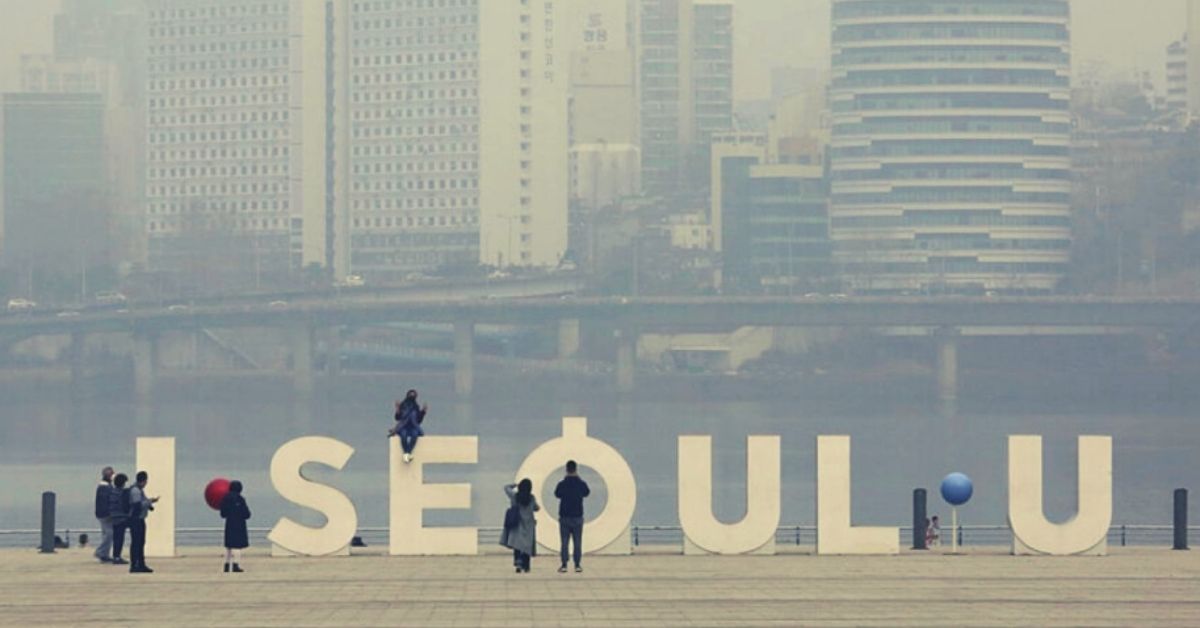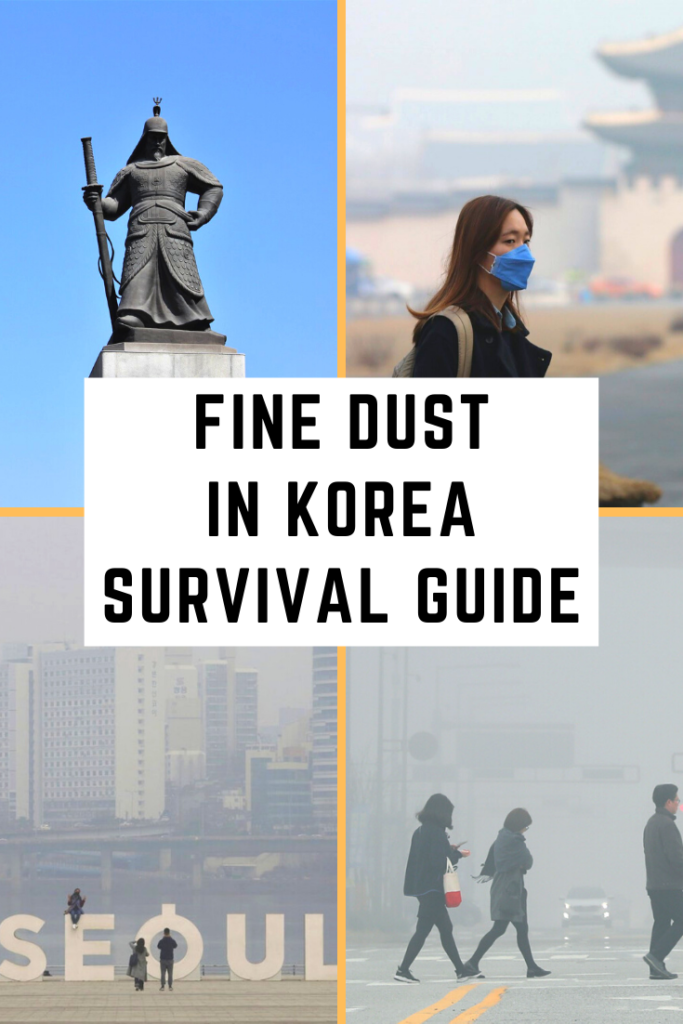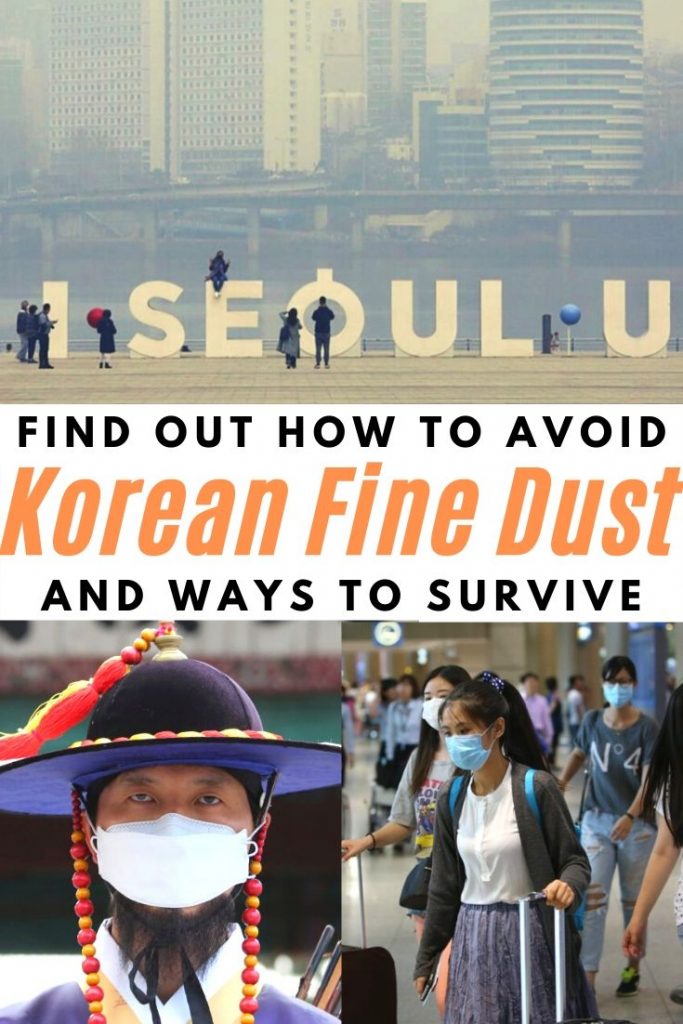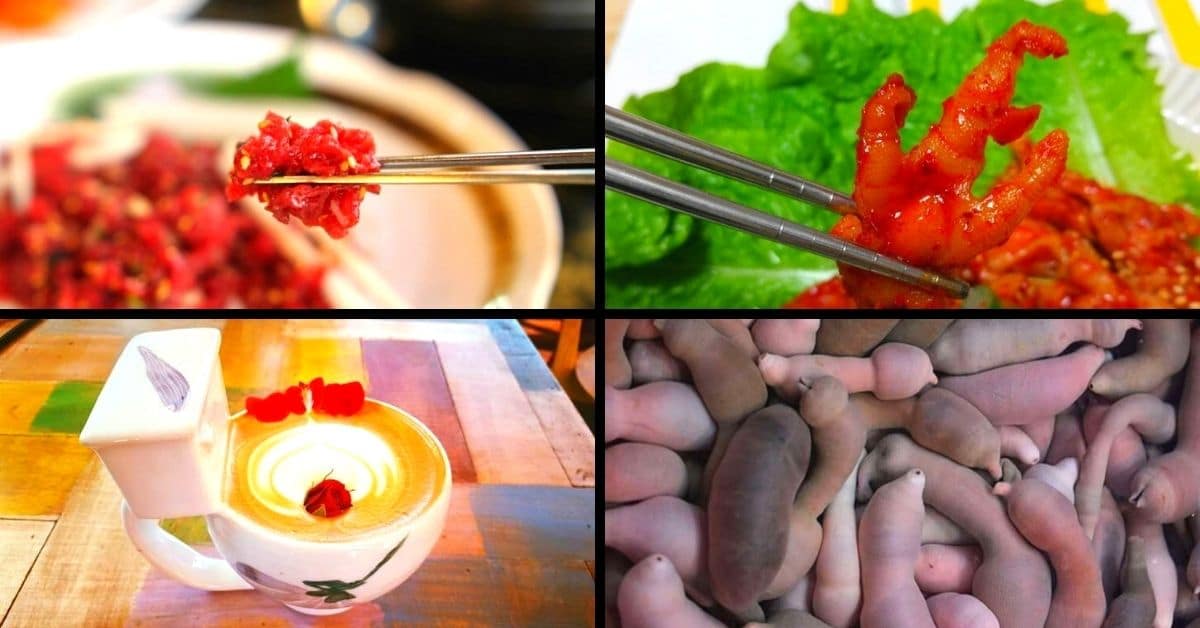Worried about fine dust in Korea and not sure if you should still travel? Not sure what fine dust is and how it affects you? Want to know how to travel safely and have a great time in Korea? I’m going to answer all these questions, and more, in this article. This essential fine dust guide will keep you informed about the dangers and ways to avoid them, as well as how to plan around Korean fine dust days. Don’t let the fine dust in Korea ruin your holiday plans. Be smart, be prepared, and make the most of your incredible travels in Korea.
Should you cancel your travel plans because of the fine dust in Korea? Absolutely not! Learning about Korean fine dust and how to deal with it will make your travels a lot easier.
The one thing we all take for granted, fresh air, is sadly no longer always that. The world is getting dirtier and the effects of air pollution are getting more and more serious.
There’s some good and bad news about air pollution, specifically fine dust in Korea. Firstly, the good news is that people and governments are increasingly aware of the problem, and they are taking actions to try to reduce the causes of fine dust.
The bad news, however, is that some of those causes are outside of Korea’s control, and there are times when the pollution levels get quite serious.
So what should you know and what can you do about fine dust in Korea?
I’m going to do my best to explain all of this, based on several years of living with fine dust, and some scientific research to back that up.
Please note: I am not a registered doctor and any medical advice offered here is only my opinion from personal experiences or research. If you have health concerns and are worried about the effects of fine dust, you should see your doctor before travelling.
Korea Essentials:
Here are some of my favourite resources that will help you save time and money on your journey to Seoul:
Flights To Korea:
Trip.com | JetRadar
Hotels In Seoul:
Myeongdong | Hongdae | Gangnam
Recommended Tour Companies:
Klook | Trazy | Get Your Guide | Voyagin
Travel & Tour Passes:
T-Money Card | Discover Seoul Pass
Internet / Mobile:
4g Sim Card | Portable 4g WiFi
Airport Transportation:
AREX Train Ticket | Incheon Airport Pickup
Follow Me On Social Media:
Disclaimer: This site contains affiliate links and I may earn commission for purchases made after clicking one of these links. Affiliate Disclaimer
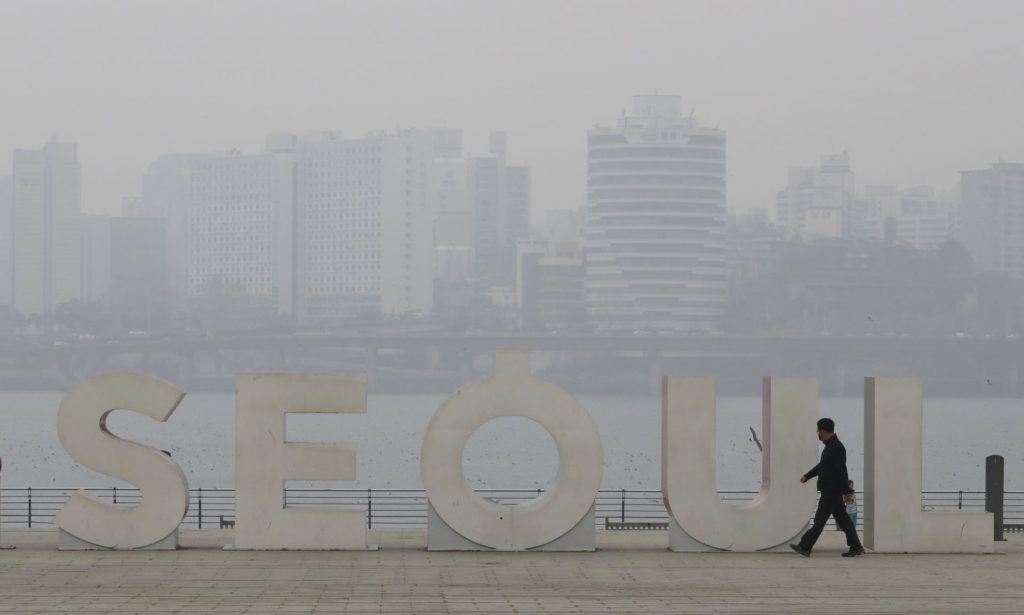
What Is Fine Dust?
Fine dust is the common term used to refer to air pollution in Korea. It’s a term that perhaps sounds a little more innocent than the dangerous sounding ‘air pollution’, but is no less problematic.
Fine dust consists of tiny particles with diameters of less than 10 micron, e.g. soot from diesel vehicles or incinerators.
Source: https://www.fijnstofmeter.com/documentatie/IQ-Fine%20Dust.pdf
Fine dust is categorised into fine dust (under 10 microns – PM 10) and ultra fine dust (under 2.5 microns – PM 2.5). Both cause problems when breathed in.
Fine dust is not unique to Korea, and travellers to many other countries across Asia will have to deal with it, especially in China and India.
The name fine dust comes from a long-standing cause of air pollution in Korea – ‘yellow dust’. More on that later. It can be highly visible, a cloud of dust descending on the country like a blanket of smoke.
When it gets very serious, you can barely see in front of you, like a thick fog descending from the skies. In England, we used to call this type of air pollution a ‘pea souper‘.
Whatever the name, the fine dust pollution can cause serious health concerns in the long run, and hurts people with respiratory problems day to day.
It can also potentially make travelling in Korea a real pain.
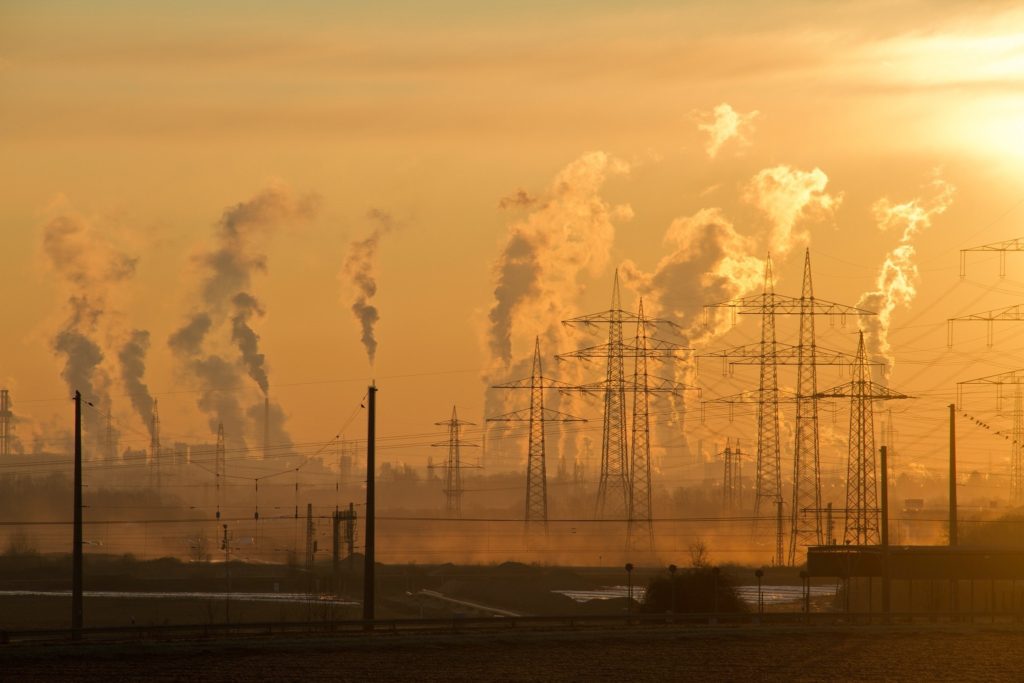
What Causes Fine Dust In Korea?
This is a highly charged question that is still being debated. Korea doesn’t want to talk about its own pollution problems, and regularly blames the pollution on outside sources – mainly China. In my opinion, all countries need to think more about solving the crisis, rather than blaming each other for it.
Fine dust in Korea is generally used as a catch-all term for several types of pollution from various sources throughout Asia. Anything under 10 microns is considered fine dust, but could be made up of soot, yellow dust, or other such pollutants.
Coal-fired Power Plants
Korea has few natural resources and imports a lot of coal to burn in its power plants. Roughly 40% of all electricity generated in Korea comes from coal-fired power plants, and Korea has been slow to adapt to renewable energy.
Korea has the second highest per-capita consumption of coal in the developed world and is the world’s 5th largest consumer of coal. LNG also makes up a large chunk of Korea’s energy supply, which releases more soot.
China’s high coal consumption also contributes to growing air pollution in East Asia.
Yellow Dust From Mongolia & China
Yellow dust is what often causes the significant lack of visibility you can find in Seoul and other cities when fine dust in Korea is high. It’s like a sandstorm blowing over the country.
These particles are basically tiny bits of sand that have blown in from deserts in Mongolia and China. This has been going on for generations; however, increased deforestation and industrialisation has led to a dramatic rise in yellow dust storms.
As the winds push the storms out towards China and Korea, they also pick up other pollutants, making the whole thing a lot worse. This is seasonal, and is much worse during the spring (March – May). Consequently, due to worsening environmental conditions, yellow dust pollution now occurs throughout the year, especially in winter.
Cars, Factories, & Other Causes
Korean companies produce a lot of goods within Korea, releasing lots of air pollution along the way. The worst offenders are steel and cement producers, shipbuilding, and construction.
Korea is a country that loves to drive, with a high level of car ownership. This leads to further air pollution. However, I have to say that there are good public transport options in Korea, which helps.
Forest fires from natural disasters, or more likely land clearing, produce a lot of air pollution. When winds blow this across the continent, it can end up adding to Korea’s fine dust problem. Forest fires occur throughout Korea, too, especially in the dry autumn and winter periods.
What Are The Effects Of Fine Dust In Korea?
If you live in Korea for a long time, then the fine dust is going to have a serious impact on your health. This obviously won’t be as severe for short-term tourists, but there are still health concerns to be aware of.
Travelling within Korea, however, is problematic during Korean fine dust days. Visibility is reduced and you could be forced to stay inside.
I’ll explain more about these two issues below:
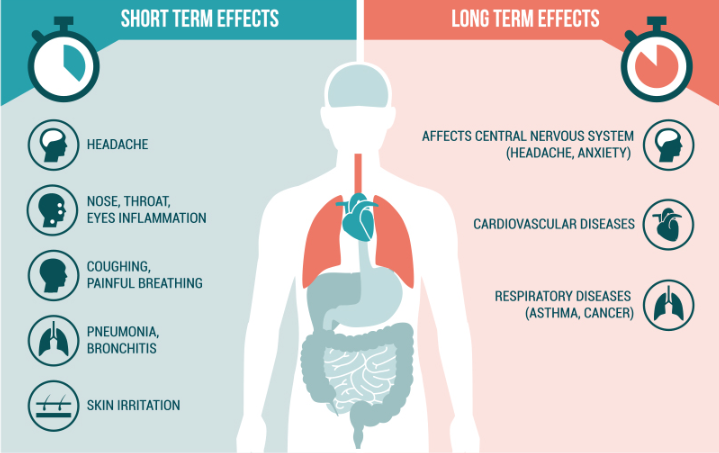
Health Effects Of Fine Dust
Fine dust enters your lungs and can cause all sorts of respiratory problems, such as coughing or asthmatic attacks. It can have other effects as well, including making your eyes itch (conjunctivitis) and cause skin irritation (from toxic substances).
These are all short-term issues that travellers in Korea should be aware of. Exposure to fine dust for a day or more can result in any of these symptoms.
The long term health effects can be much worse, such as lung and brain issues (including cerebrovascular diseases, such as strokes or aneurysms), and severe breathing problems. I won’t focus on those, however, as this is mostly advice for travellers.
The sort of health effects you get will depend on 2 different things.
Firstly, the level of fine dust in Korea. You can see from the table below the level of fine dust – from green (0) to purple (300+) – and the effects these have on people’s health.
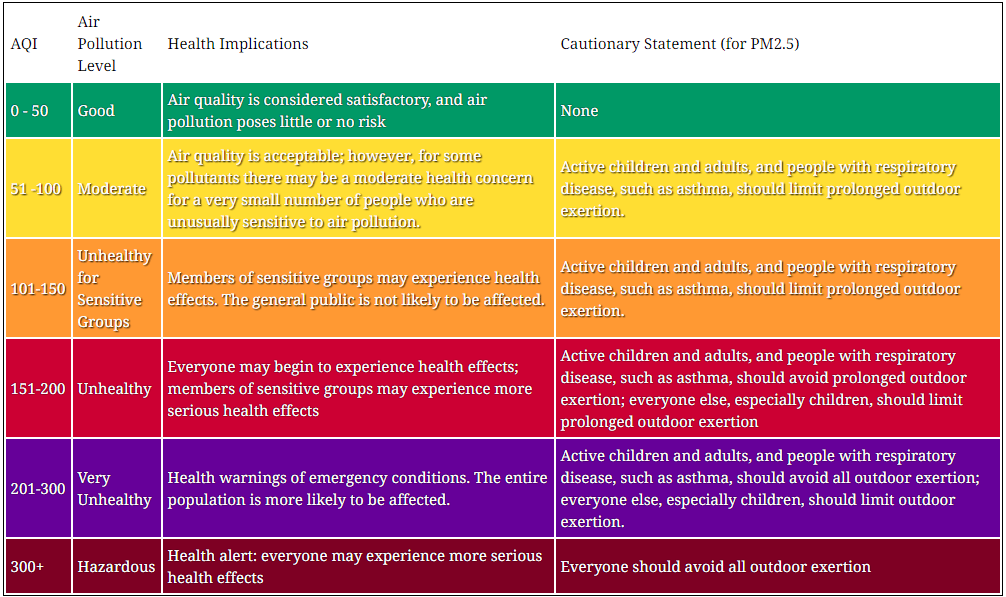
As a general rule, if the fine dust level is over 100, you might feel the effects of fine dust pollution. It’s best to wear a good fine dust mask on these days.
Who Is At Risk From Fine Dust In Korea?
Secondly, there are vulnerable groups who should pay close attention to the warnings listed. These people are more likely to suffer from the effects of fine dust in Korea and should follow the precautions above.
These groups are as follows:
- Children (including teenagers) – their lungs are still developing and they are more likely to suffer from asthma. Playing outside when the weather is warmer is dangerous as fine dust levels are higher during these times.
- Older adults – they can be suffering from pre-existing lung diseases or have other health issues that reduce their ability to deal with increased air pollution.
- People with respiratory diseases – This can include those who suffer from asthma, chronic bronchitis, and emphysema. These diseases will make people more sensitive to the dust and increase breathing problems and the need to use medication. They should consult a doctor before travelling if concerned.
- Active people / outdoor workers – People who spend a lot of time outdoors working or exercising are at increased risk of health problems, especially if breathing hard.
Anyone can be affected when the fine dust levels are high enough, so always be careful. This is especially true when the level of fine dust gets over 200. Be sure to wear a fine dust mask that will keep out the dust.
Travelling Advice For Fine Dust In Korea
Fine dust days are like bad weather – they can appear out of nowhere and suddenly force you to change your travel plans. Forecasts help to plan around these days and hopefully you can still have a great time travelling in Korea.
The fine dust in Korea spoils the view and you often get a blurry line on the horizon. When fine dust levels are high, that line will get closer and make the skies grey and dull – which really doesn’t look good in holiday pictures! Very high days will result in poor visibility and the city being covered in grey smog. Not nice at all.
Sensitive groups should stay inside at these times, and everyone should generally try to avoid outdoor activities when the fine dust gets over 200 (see above table). This can force you to change your plans suddenly as fine dust can be unpredictable.
There are still plenty of things you can do inside, so don’t let the fine dust put you off planning a trip to Korea. This guide to 25+ great indoor activities in Seoul should help you get some inspiration.
25 Things To Do During Bad Weather In Seoul.
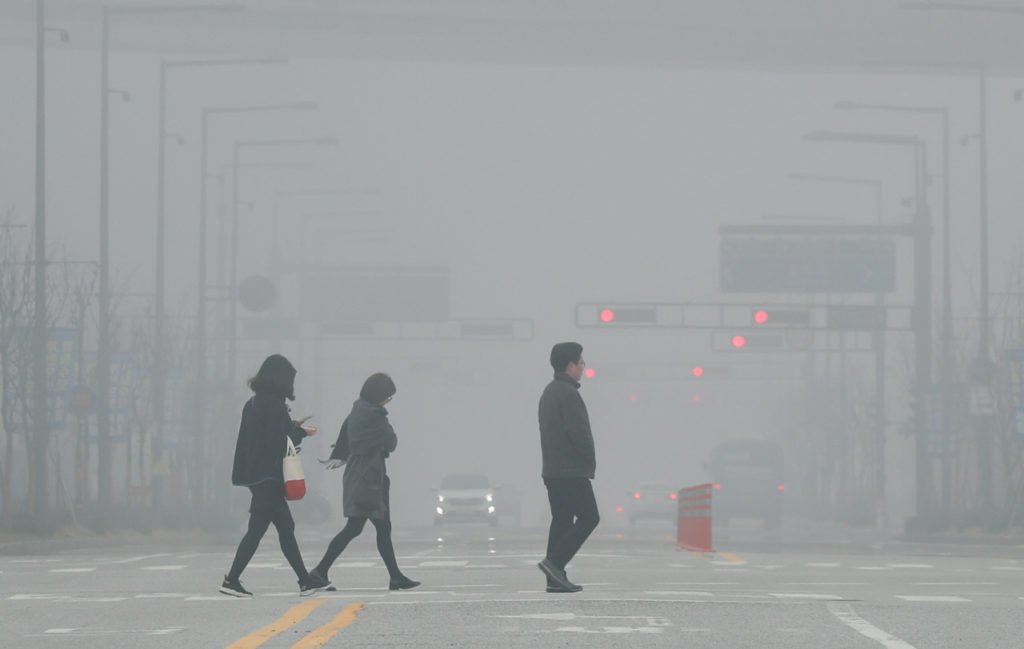
When Is Fine Dust In Korea Bad?
Fine dust levels are dependent on many different factors – manufacturing levels, weather patterns, energy production, etc. What this means is that there are times when fine dust levels are higher or lower.
Generally, spring is the worst time for fine dust. The yellow dust storms from Mongolia and China occur most frequently during this time. Energy production is also high during winter and early spring as people heat their houses during the cold Korean winter.
This lasts until the end of April / beginning of May. Following this, the rainy seasons starts and washes the pollution away. Summer has a few fine dust days, but not that many. Autumn also has relatively low levels
Here’s a little summary about each season.
- Spring (bad) – The highest fine dust levels, but still lots of days with low dust levels. Be careful if travelling at this time. Sadly, this is also the best time to visit Korea.
- Summer (good) – Fewer fine dust days, especially during rainy season (June). The weather is hot and humid.
- Autumn (average) – Not bad, some fine dust days, but not that high. There are many typhoons during this time which can blow pollution around.
- Winter (average / bad) – Getting worse. The last few years have seen more yellow dust and fine dust days, especially when the weather gets warmer.
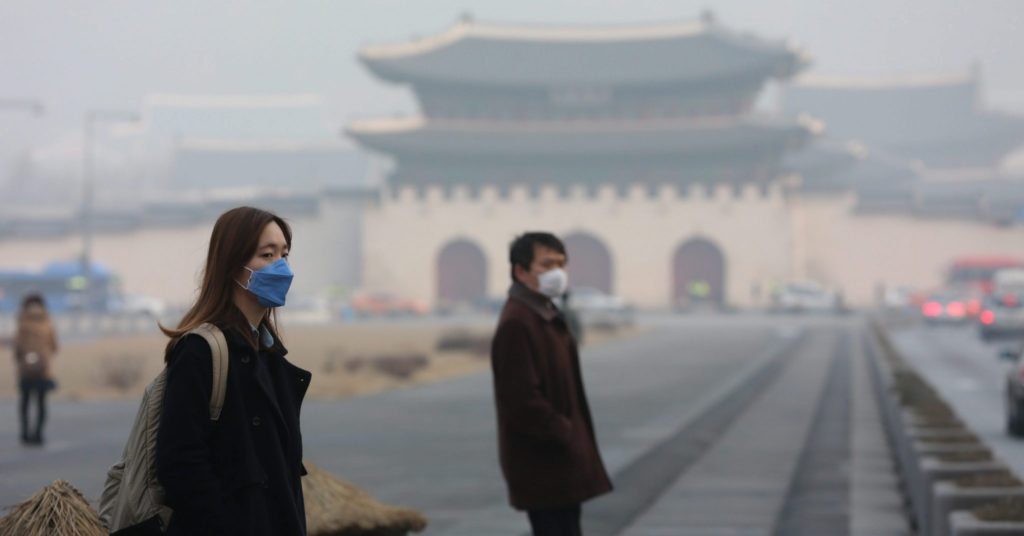
Fine Dust Masks In Korea
When the fine dust starts to get bad in Korea, the best thing you can do is wear a fine dust mask. You’ve probably seen pictures of people in smoggy cities who look like they’re about to go into surgery. This is how everyone in Korea looks on a bad fine dust day.
Fine Dust Mask Ratings
The most important thing about face masks is choosing the right type of mask. I’m going to have to shout the next part, sorry.
DO NOT WEAR SURGICAL MASKS – THEY DON’T PREVENT FINE DUST.
This is a real problem. Surgical masks are to prevent the spread of germs and do absolutely nothing to stop you breathing in fine dust. You might as well not wear one.
Fine dust masks need to offer a certain level of protection. There are two different rating systems for fine dust masks that you’ll see in Korea:
- N Masks – N95 / KN95 / N99 – these masks follow international standards on air pollution and offer 95% / 99% protection. They are designed to filter out particles and offer the best protection against fine dust.
- KF Masks – KF80 / KF94 / KF99 – These masks follow Korean safety standards. They are similar to the N masks, but offer different levels of protection from fine dust (80% / 94% / 99%). The KF80 mask is the lowest acceptable level. These masks are only available in Korea.
I’d recommend wearing at least a N95 or KF94 mask if fine dust levels are high in Korea.
Masks with filters can cause problems for people with breathing difficulties. Therefore, please consult a doctor if you think you are likely to be affected. These masks will only protect you from fine dust, not other chemicals and gases.
When To Wear A Fine Dust Mask
You should definitely wear a fine dust mask if the fine dust level gets over 200 – this is when almost everyone will be affected and breathing problems will develop.
For sensitive groups (I’m in this group), I’d recommend wearing a mask once the fine dust level gets over 150, or maybe even 100 if you have serious respiratory problems.
If the fine dust levels get over 300 (happens very, very rarely), then I’d recommend staying indoors. In which case, you won’t need to wear a mask.
Where To Buy Fine Dust Masks
You can buy fine dust masks online from shops such as Amazon (global) or G Market (in Korea). Inside Korea, you can also find fine dust masks for sale in many convenience stores, pharmacies, and supermarkets.
The easiest place to buy fine dust masks is from a convenience store. However, they will be a little bit more expensive than buying them from a pharmacy or online.
You’re more likely to find the KF filters sold in Korea, the N masks are available online.
How To Use A Fine Dust Mask
A proper fine dust mask should cover your nose and mouth and stop air from entering or escaping the mask around your face. The air you breathe through the filter shouldn’t become contaminated with outside air.
Putting on the mask correctly is very important and affects how well the mask will work. Follow this guide to putting on a fine dust mask, or see the picture below:
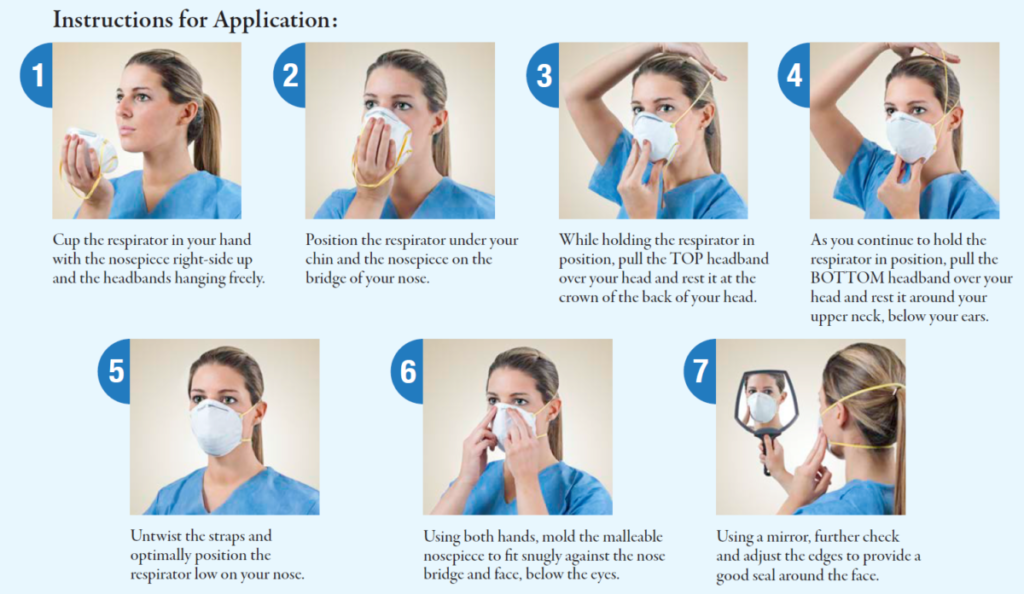
Good quality fine dust masks will have a hardened edge around the mask so you can adjust it to fit your nose and jaw snugly. Try not to break the seal and keep the mask clean and in good condition between uses.
These masks are only meant to be used for a single day (although most people use them for longer than that. If you have serious health concerns, change your mask every day.
If the air quality is very bad (over 250), or if you get the mask wet, you should change the mask after 8 hours. This also applies if you sneeze into the mask several times.
You can buy reusable fine dust masks (usually online), but these will be a lot more expensive. These can be worn for around 200 hours before you need to change them.
If you want a more detailed guide to fine dust masks, be sure to read this guide.
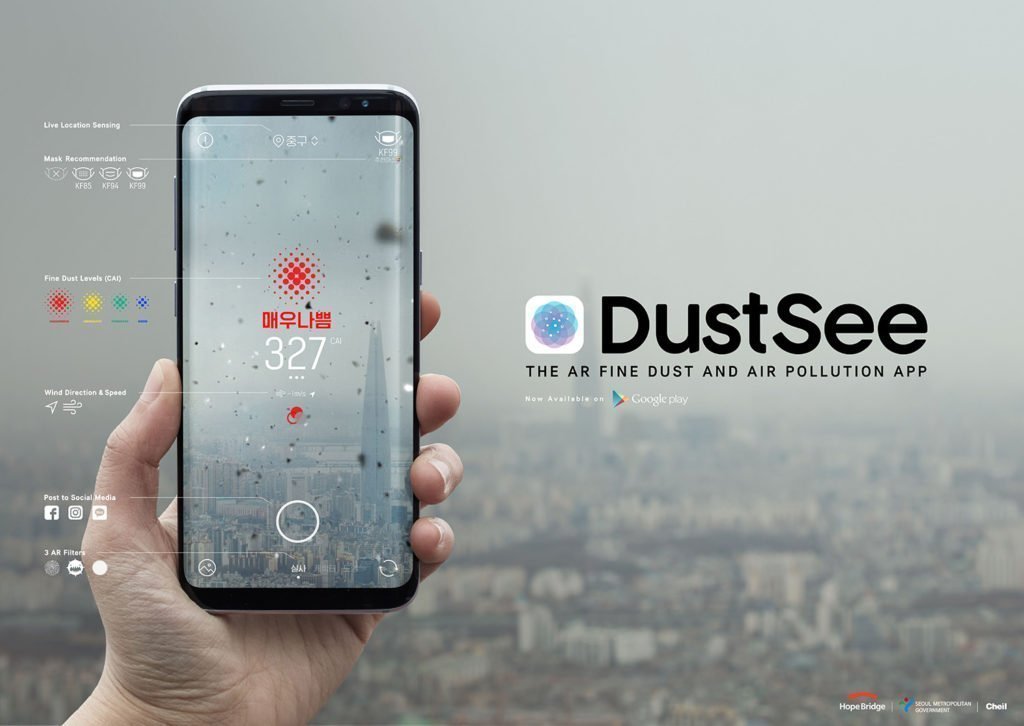
How To Check Fine Dust Levels In Korea
The best way to check the fine dust levels in Korea is to download a mobile app that will give you live and expected fine dust levels. Most people in Korea will have one and there are several good ones I can recommend.
- Air Visual by IQ Air (the app I use)
- AQICN
- Air Quality Index by BreezoMeter
- MiseMise Air (in Korean – very popular here)
These apps are all very similar, with detailed forecasts, colour coded symbols to show the level (green is good, red is bad), health advice depending on the level, and the weather. I’d really recommend getting an app so you can check the fine dust levels in Korea that day.
The Korean government will also send out text messages (in Korean) when fine dust levels are bad. Public areas, such as train or subway stations, often display fine dust information. Look for the PM 2.5 or PM 10 reading.
Should You Cancel Your Travel Plans?
Should you let potential fine dust in Korea cancel your trip?
No.
Instead, be smart and plan ahead in case there is fine dust in Korea when you travel. Follow these tips and you can travel just as you would on a rainy day.
- Get an app to check the fine dust levels
- Buy the correct mask when dust appears
- Have backup plans to do indoor activities if the dust gets bad
- Consult a doctor before travelling if you’re worried about health issues.
- Know the risks before you travel
Liked this? Pin It For Others
If you enjoyed reading this article, then please go ahead and share this with your friends on Pinterest.
You Might Also Like:
Here are some other great articles that you might want to read about travelling in Korea. Remember, if you have any questions about anything, please feel free to post a comment or join the Korea Travel Advice Facebook Group.
